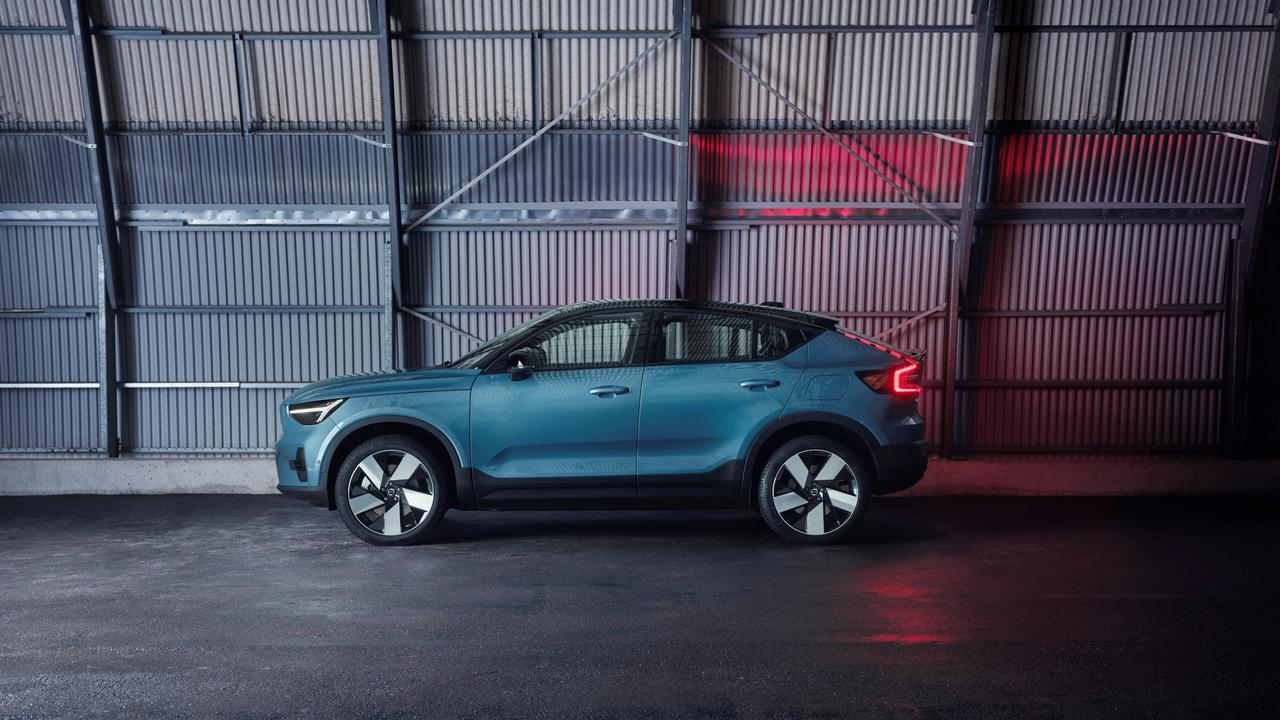Volvo is about to start its big electric transformation
This maker has a reputation for safe, stylish family cars and it’s about to embark on a massive model overhaul that will change its Aussie line-up.
Volvo is on the cusp of a monumental change.
In the next 12 to 18 months the Swedish brand will have three fully electric SUVs on sale in Australia.
First cab off the rank is the XC40 Recharge, which will launch in the second half of this year priced from $76,990 (before on-road costs).
This will be followed by the coupe-like C40 Recharge SUV, which will arrive in 2022.

These models boast some serious performance, thanks to a pair of electric motors good for 300kW and 660Nm and all-wheel drive grip.
The XC40 has a range of up to 418km and can be charged from zero to 80 per cent in 40 minutes via a fast charger.
Volvo is still in the process of homologating the C40 but the company’s global head of product strategy, Alexander Petrofski, says they are expecting it to have a range of about 420km, too.

Volvo hasn’t announced prices for the C40 yet, but expect it to come with a slight premium over the XC40 Recharge.
The pair will be built on the same platform but Volvo has tried to differentiate them by making the C40 more stylish.
“With the C40 we tried to build on the strength of the XC40, but create something that brought other values, less practicality and more focused on appealing design,” says Mr Petrofski.
The third vehicle is an all-electric version of the XC90 large SUV, which will follow on the heels of the C40.

The vehicles are part of the company’s global strategy to stop selling internal combustion engines by the end of the decade explains Petrofski.
But he did say customers’ take up of the technology would be the deciding factor.
“Ultimately it will be up to the consumers’ acceptance for electric cars, and with good value propositions, trying to lower the price threshold, making the monthly costs predictable, we believe this is achievable on a global scale,” he says.

The current electric vehicles are being built on the same platform as the petrol and diesel-powered versions, but the company could follow the likes of Audi, Hyundai and Toyota and create a dedicated electric car platform.
“There are advantages if you build your technology and your architecture around electrification only,” says Petrofski. “And we are absolutely pursuing the track of dedicated fully electric only architecture.”
Dedicated EV platforms generally help create vehicles that are more spacious inside and are often scalable, meaning you can build a wide variety of vehicles off the one platform helping to lower costs.
Volvo Australia is keen to get its mitts on all fully electric models and expects a new one to arrive every year for the next few years.
But making electric cars work in Australia will be challenging; Petrofski points to the difficulty in building charging infrastructure that runs from north to south as a likely hurdle for Australia.
The company imagines buyers will mostly be city based.
Volvo is also preparing to launch its spin-off electric-only brand, Polestar, in Australia with the Polestar 2 due in November this year.
The Polestar 2 has striking similarities to the C40 Recharge. Both are built on the same platform, have a stylish coupe design and will have a dual motor 300kW version.




